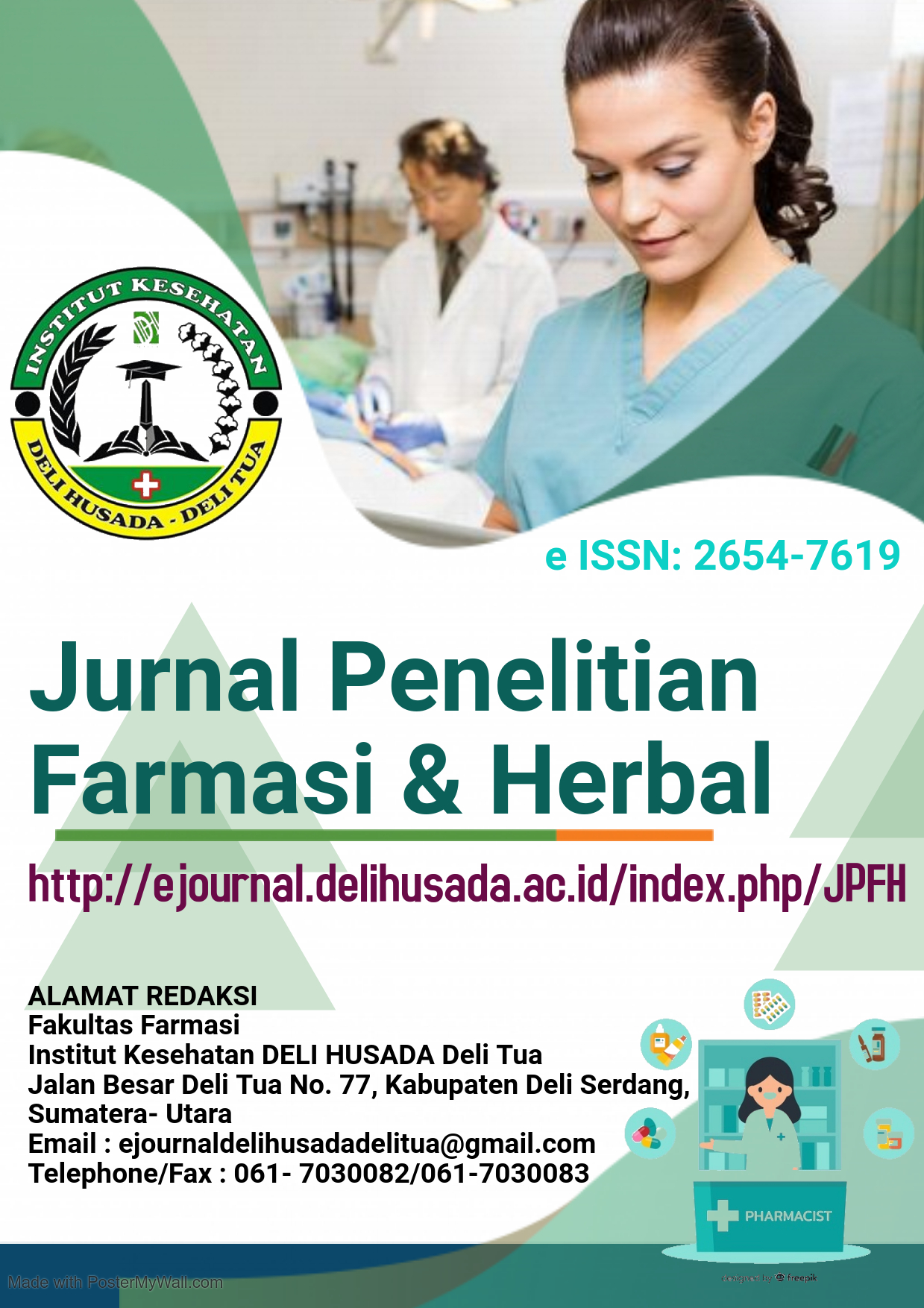ANALISIS ANTIOKSIDAN PADA KAPSUL HABBATUSSAUDA (Nigella sativa L.) DENGAN METODE DPPH SECARA SPEKTROFOTOMETRI UV-Vis Tahun 2022
Abstract
Background: One of the plants that is often used as a medicinal plant is Black Seed. Black Seed in Indonesia is called of black cumin. Main contains of black cumin (Nigella sativa L.) are Thymoquinone, Dithymoquinone, Thymohydroquinone, and Thymol as antioxidants.. Purpose: of this research to test the antioxidant activity contained in Black Seed capsules. Black Seed capsules were tested for weight uniformity, and phytochemical screening. This research Method : Then the Black Seed capsules were tested for antioxidant activity using the DPPH method using a Spectrophotometer UV-Vis at a wavelength of 516 nm, then the value of IC50 was determined in the sample and for comparison, Vitamin C as a comparison. Results: results of uniformity test of capsule weights A1 = 2.72%, A2 = 2.54%, B = 2.00%. The results of phytochemical screening of Black Seed capsule powder contain alkaloids, flavonoids, tannins, saponins, and steroids. The results of the antioxidant activity test using the DPPH method showed that Black Seed capsules with methanol solvent had antioxidant activity with an Inhibitory Concentration (IC50) of 97.635 µg/ml categorized in a class of strong antioxidant and vitamin C as a comparison has IC50 of 4.397 µg/mL with a very strong category.. Conclusion: so that vitamin C has a stronger antioxidant activity than black seed capsules. The results showed that Black Seed capsules contained antioxidants and had strong antioxidant activity.
.
Downloads
References
Departemen Kesehatan R.I. (1995). Materia Medika Indonesia. Jilid keenam.
Departemen Kesehatan R.I. (2014). Farmakope Indonesia Edisi V. Jakarta: Departemen Kesehatan RI.
Farnsworth, N.R. (1966). Biological and Phytochemical Screening of Plants. Journal of Pharmaceutical Sciences.
Harborne, J.B. Phytochemical Methods. Penerjemah: Padmawinata, K., dan Soediro, I. (1987). Metode Fitokimia. Bandung. Penerbit ITB.
Khasanah, Nur. (2009). “Pengaruh Pemberian Ekstrak Jintan Hitam (Nigella sativa L.) terhadap respon Proliferasi Limfosit Limpa Mencit balb/c yang diinfeksi Salmonella typhimurium”. Semarang
Molyneux, P. (2004) The Use Of The Stable Free Radical Diphenylpicrylhydrazyl (DPPH) For Estimating
Mujahidatul M, dkk. (2012). Pengaruh Minyak Nigella sativa terhadap Kualitas Spermatozoa Tikus Wistar yang Terpapar Asap Rokok. J Indon Med Assoc, Volum: 62,Nomor: 5.
Retnaningtyas, Y.,dkk. (2017). Uji Aktivitas Antioksidan Kombinasi Daun Kopi Arabica (Coffea arabica) dan Daun Pandan (Pandanus amaryllifolius) dengan Metode DPPH. Jurnal Farmasi Indonesia. 9(1): 21-27.
Ridho, dkk. (2013). Uji Aktivitas Antioksidan Ekstrak Metanol Buah Lakum (Cayratia Trifolia) Dengan Metode Dpph (2,2-Difenil-1-Pikrilhidrazil). Program Studi Farmasi Fakultas Kedokteran, Universitas Tanjungpura.
Rosahdi, T.D.,dkk. (2013). Uji Aktivitas Daya Antioksidan Buah Rambutan Rapiah Metode DPPH. Jurnal Istek.
Yulian.,dkk. (2020). Uji aktivitas antioksidan ekstrak etanol dan ekstrak air biji habbatussauda (Nigella sativa L.) Pharmaceutical journal of Islamic pharmacy.







